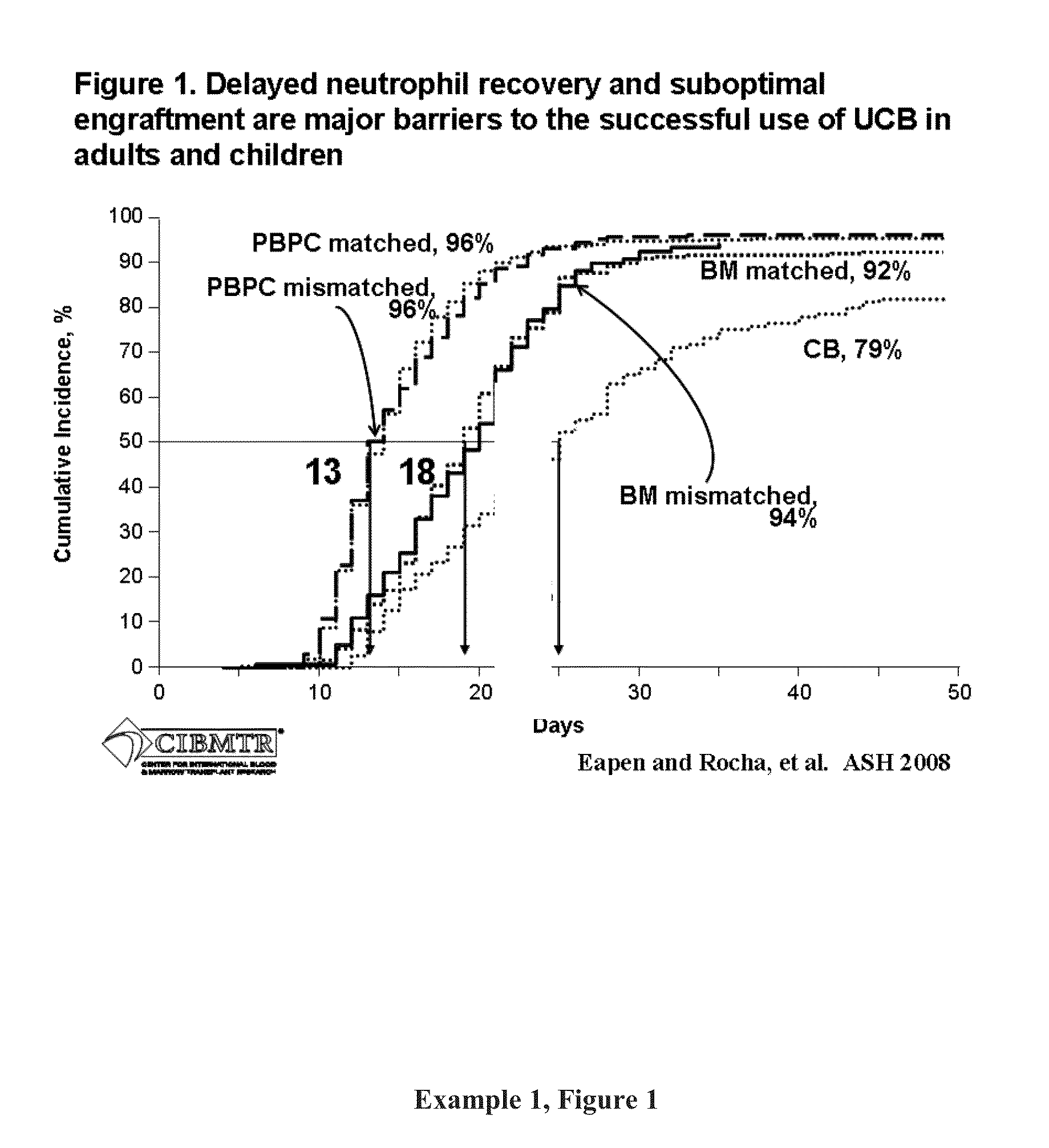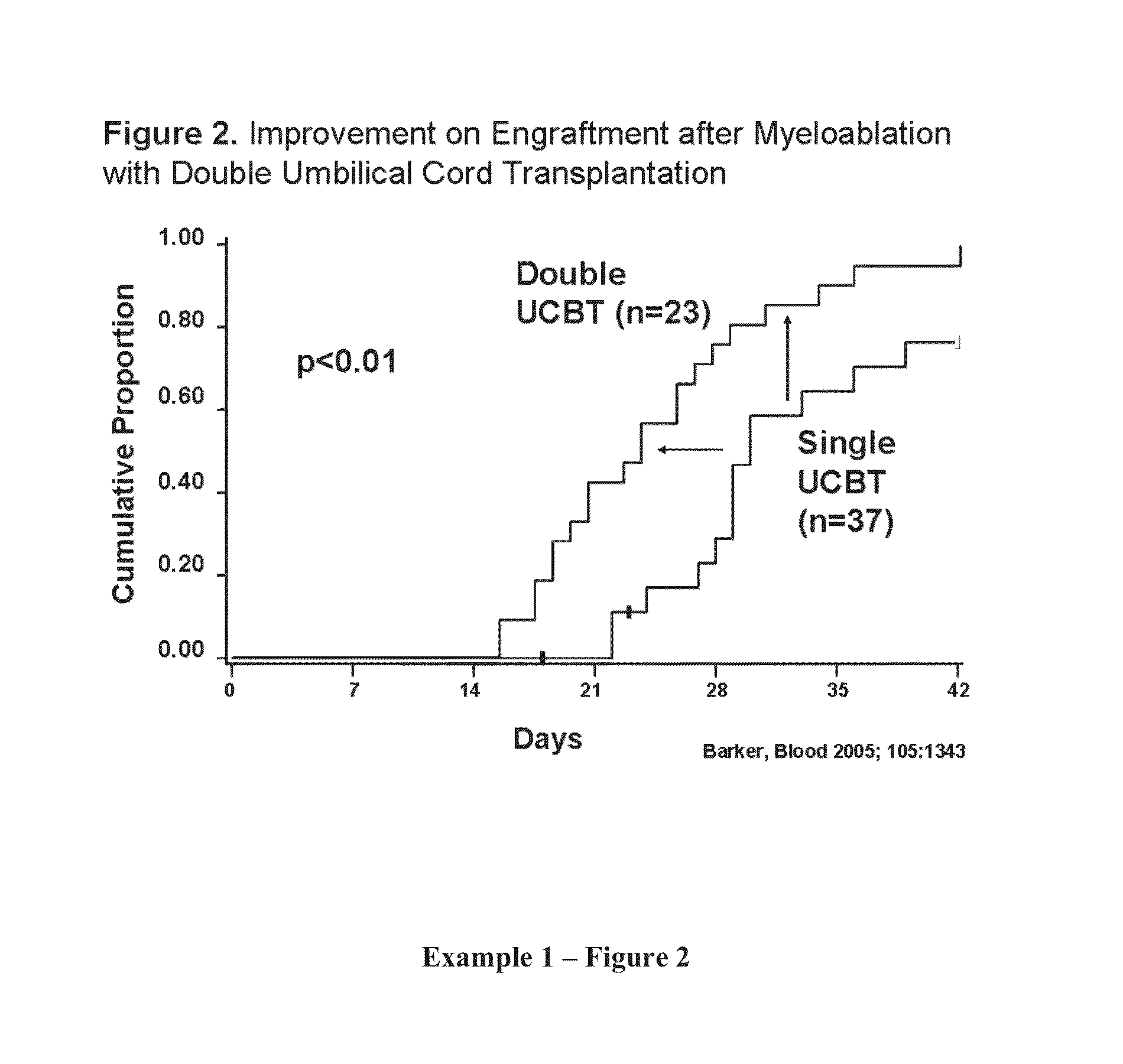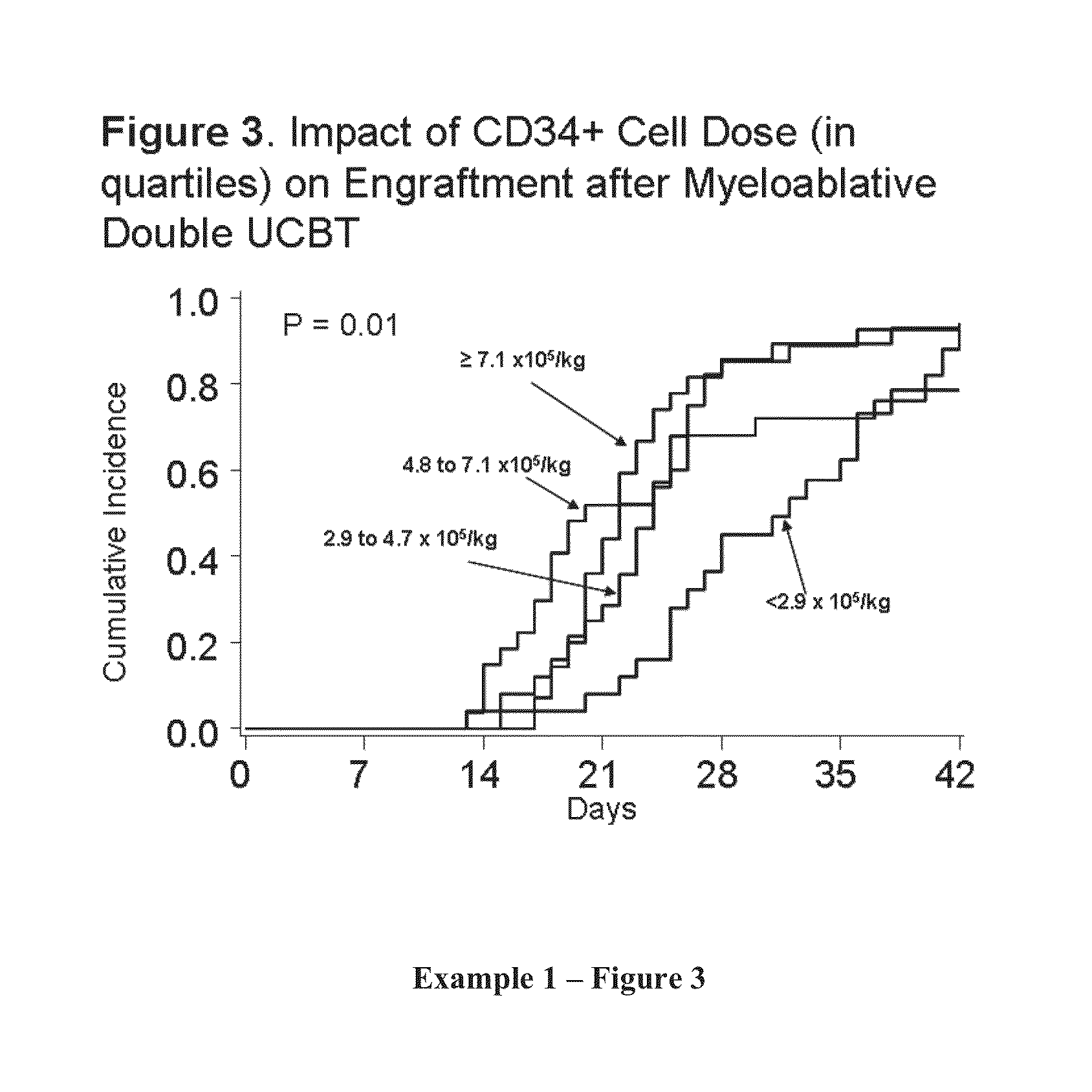Compositions and methods for cxcr4 signaling and umbilical cord blood stem cell engraftment
a technology of umbilical cord blood stem cells and cxcr4 signaling, which is applied in the direction of biocide, drug composition, cardiovascular disorder, etc., can solve the problems of particularly difficult engraftment, achieve the effect of enhancing the homing and engraftment of donor allogeneic ucb stem cells, enhancing cell engraftment, and improving the responsiveness of treated ucb cells
- Summary
- Abstract
- Description
- Claims
- Application Information
AI Technical Summary
Benefits of technology
Problems solved by technology
Method used
Image
Examples
embodiments
[0312]The methods of the invention involve, in one aspect, administration of umbilical cord blood cells to subjects. Umbilical cord blood cells are cells harvested from the veins and arteries of an umbilical cord. Methods for extracting such cells from umbilical cords are known in the art and have been published (See for example US Published Application No. 20060275271). These cells may be harvested and frozen prior to use or they may be used without freezing. Methods for freezing such cells are also known in the art and have been published (See for example US Published Application No. 20060275271).
[0313]As used herein, an isolated cell population is a cell population that has been physically separated from the environment and / or the context in which it naturally occurs or exists. Thus, once the umbilical cord blood cells are removed from the umbilical cord, they are considered isolated.
[0314]In important embodiments of the invention, the umbilical cord blood cells are fractionated ...
example 1
[0389]Engraftment after Double UCBT. It was hypothesized that the simple co-infusion of two UCB units would approximately double the number of CD34+ cells (presuming the two units were approximately equivalent in cell number). If engraftment was based on the combined CD34 cell dose, then engraftment would increase and the incidence curve would move to the left demonstrating more rapid recovery (see Example 1, FIG. 1). As shown in Example 1, FIG. 2, the result of the initial phase I study proved safety of the double UCBT platform and suggested that there was an additive effect. In the 23 patients with high-risk hematologic malignancy (age range, 13-53 years) that received 2 UCB units (median infused dose, 3.5×107 total nucleated cells [TNC] / kg; range [r], 1.1-6.3×107 / kg) neutrophil recovery occurred at a median of 23 days (r, 15-41 days) which was significantly shorter than a similar cohort of patients who had received single UCB units grafts (65% incidence of engraftment at a median...
example 2
[0417]The number of UCB HSPCs contained in a single unit for transplantation is limited. Our preliminary data show that UCB vary in chemotactic responsiveness to SDF-1 gradient. The data presented below supports our new hypothesis that priming the CXCR4-SDF-1 axis could improve HSPC homing and thus accelerate allogeneic engraftment of UCB.
[0418]In Vitro Chemotactic Responsiveness of UCB HSPCs Varies with the Donor.
[0419]An increased migration of UCB-derived CD34+ cells, as compared to BM and mPB CD34+ cells was reported in transwell migration assays was previously reported. However, we noticed large inter-individual differences in the in vitro migratory ability of UCB CD34+ cells, ranging from 1.1% to 14.3% for spontaneous migration and 3.1% to 62.3% for SDF-1-induced (300 ng / mL) migration. The lower migratory capacity in vitro of UCB-derived CD34+ cells was not due to lower expression of CXCR4, but likely reflects the decreased migratory behavior of these cells. More importantly, b...
PUM
 Login to View More
Login to View More Abstract
Description
Claims
Application Information
 Login to View More
Login to View More - R&D
- Intellectual Property
- Life Sciences
- Materials
- Tech Scout
- Unparalleled Data Quality
- Higher Quality Content
- 60% Fewer Hallucinations
Browse by: Latest US Patents, China's latest patents, Technical Efficacy Thesaurus, Application Domain, Technology Topic, Popular Technical Reports.
© 2025 PatSnap. All rights reserved.Legal|Privacy policy|Modern Slavery Act Transparency Statement|Sitemap|About US| Contact US: help@patsnap.com



